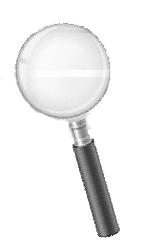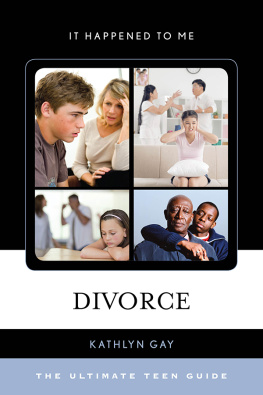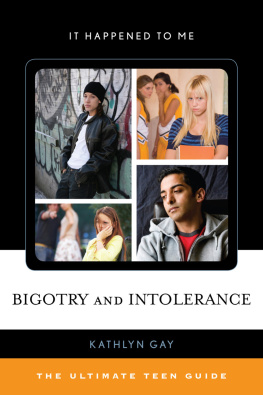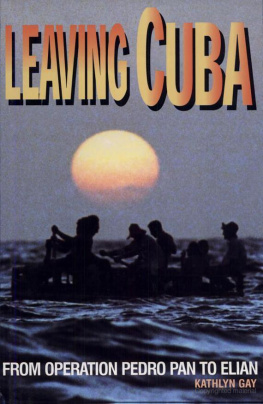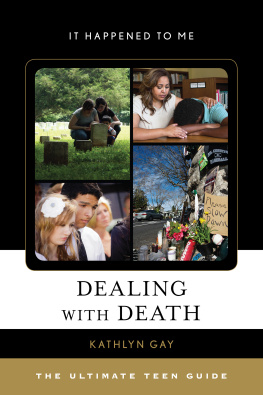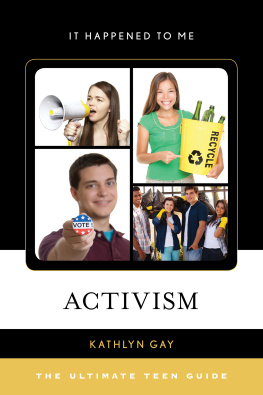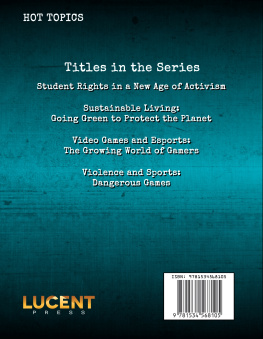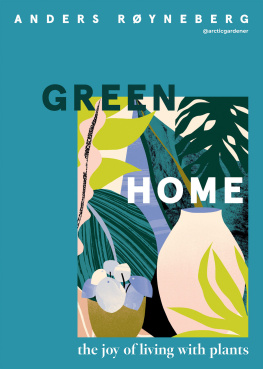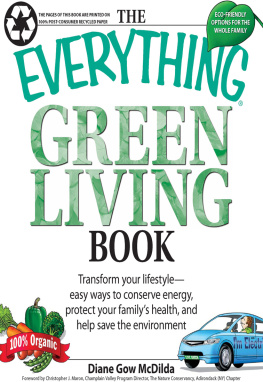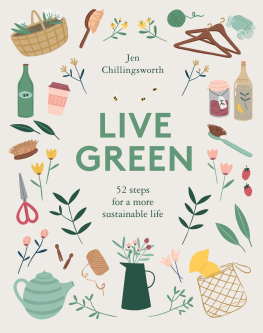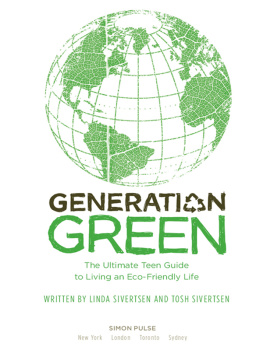About the Author
Kathlyn Gay is the author of more than 120 books that focus on social and environmental issues, culture, history, communication, and sports for a variety of audiences. A full-time freelance author, Kathlyn has also published hundreds of magazine features, stories, and plays, and she has written and contributed to encyclopedias, teachers' manuals, and textbooks. She is the author of several titles in the It Happened to Me series: Epilepsy (2002, with Sean McGarrahan), Cultural Diversity (2003), Volunteering (2004), Religion and Spirituality in America (2006), The Military and Teens (2008), and Body Image and Appearance (2009).
Selected Resources
Books
Bach, David. Go Green, Live Rich (New York: Broadway Books/Random House, 2008).
Carson, Rachel. Silent Spring (New York: Mariner Books, 2002).
Cassio, Jim, and Alice Rush. Green Careers: Choosing Work for a Sustainable Future (Gabriola Island, BC: New Society, 2009). Connor, Nancy. Living Green: The Missing Manual (Sebastopol, CA: O'Reilly Media, 2009).
Deitch, Scott M. Green Collar Jobs: Environmental Careers for the 21st Century (Santa Barbara, CA: ABC-CLIO, 2010).
Freinkel, Susan. Plastic: A Toxic Love Story (New York: Houghton Mifflin Harcourt, 2011).
Gore, Al. An Inconvenient Truth: The Crisis of Global Warming (New York: Penguin Group, 2007).
Hohn, Donovan. Moby-Duck: The True Story of 28,800 Bath Toys Lost at Sea and of the Beachcombers, Oceanographers, Environmentalists, and Fools, Including the Author, Who Went in Search of Them (New York: Viking, 2011).
Kaye, Cathryn Berger, and Philippe Cousteau. Going Blue: A Teen Guide to SavingOur Oceans, Lakes, Rivers, and Wetlands (Minneapolis, MN: Free Spirit, 2010).
Lewis, Barbara. The Teen Guide to Global Action: How to Connect with Others(Near and Far) to Create Social Change (Minneapolis, MN: Free Spirit, 2008).
Llewellyn, A. Bonwyn, James P. Hendrix, and K. C. Golden. Green Jobs: A Guideto Eco-Friendly Employment (Avon, MA: Adams Media, 2008).
McDilda, Diane Gow 365 Ways to Live Green (Avon, MA: Adams Media, 2008).
McKibben, Bill. The End of Nature (New York: Random House, 2006).
McLelland, Carol L. Green Careers for Dummies (Hoboken, NJ: Wiley, 2010).
Melville, Greg. Greasy Rider: Two Dudes, One Fry-Oil-Powered Car, and a Crosscountry Search for a Greener Future (Chapel Hill, NC: Algonquin Books of Chapel Hill, 2008).
Parks, Barbara, and Jodi Helmer. The Complete Idiot's Guide to Green Careers (New York: Penguin Group, 2009).
Rogers, Elizabeth, and Thomas M. Kostigen. The Green Book (New York: Three Rivers Press, 2007).
Rogers, Heather. Green Gone Wrong: How Our Economy Is Undermining theEnvironmental Revolution (New York: Simon & Schuster, 2010).
Savedge, Jenn. The Green Teen Book: The Eco-Friendly Teen's Guide to Saving thePlanet (Gabriola Island, BC: New Society, 2009).
Scott, Jennifer Power. Green Careers: You Can Make Money AND Save the Planet (Montreal, QC: Lobster Press, 2010).
Smith, Sharon J. The Young Activist's Guide to Building a Green Movement +Changing the World (Berkeley, CA: Ten Speed Press, 2011).
Organizations and Their Websites
Car Talk, www.cartalk.com, includes features about cars running on biodiesel fuel and cars of the future (such as flying cars).
Defenders of Wildlife, www.defenders.org, does what its name indicates, working around the world to protect wildlife.
Earth Day Network, www.earthday.org, works in 192 countries to broaden, diversify, and mobilize the environmental movement and to promote Earth Day activities.
EcoLogo Program, www.ecologo.org, is a Canadian certification of "environmentally-preferable products."
Energy Efficiency and Renewable Energy of the U.S. Department of Energy, www . energysavers.gov.
Getgreenliving.com , www.getgreenliving.com, is a website with the latest news and articles on how to live the green life.
Humane Society of the United States, www.humanesociety.org, is a nonprofit animal protection organization.
Humane Teen, www.humaneteen.org, is part of the Humane Society and features teens who are helping animals.
National Wildlife Federation, www.nwf.org, is a conservation organization that works to protect wildlife habitat, confront global warming, and engage communities in conservation.
Natural Resources Defense Council, www.nrdc.org, is an environmental action group made up of lawyers, scientists, and other professionals.
Organic Trade Association, www.ota.com, is a business group that protects and promotes organic trade.
Treehugger, www.treehugger.com, is a media outlet dedicated to making sustainability mainstream.
U.S. Environmental Protection Agency, www.epa.gov, is responsible for protecting human health and the environment.
U. S. Fish and Wildlife Service, www. fws.gov, is a bureau within the U. S. Department of Interior that conserves, protects, and enhances fish, wildlife, and plants and their habitats.
U.S. National Park Service of the U.S. Department of Interior, www.nps.gov, is in charge of national parks, plus national monuments, battlefields, military parks, historical parks, historic sites, lakeshores, seashores, recreation areas, scenic rivers and trails, and the White House grounds.
World Wildlife Fund, www.worldwildlife.org, is a global conservation organization.
CARING FOR THE EARTH
"The earth is being destroyed and we're not doing anything."
teenager Nate Pahe of the Washoe tribe
T he early caretakers of the environment in the Americas were indigenous people. Tribal groups who first inhabited the continent were well aware that all life on earth is interconnected and that Mother Earth needed protection. On the other hand, European colonists believed they had to tame nature. They feared the wilderness and were convinced it was infested with wild beasts and savages. For centuries, settlers pressed across the continent, cutting down forests, damming rivers, constructing roads, laying rail lines, building cities, and industrializing the nation. For the most part, settlers did not question the wisdom of changing the environment to suit humans; it was called development and thought to be a sign of progress. That prompted Chief Seattle, leader of the Suquamish tribe in the Washington Territory, to warn in an 1855 letter, "Continue to contaminate your bed and one night you will suffocate in your own waste."
The indigenous concept of protecting Mother Earth has been passed on over many generations. As an example, in 2009 teens from northern Michigan and Marquette, Michigan's Keweenaw Bay Indian Community, continued a program to protect bees and butterflies that pollinate and helped restore native plants to areas of the Upper Peninsula. Northern Cheyenne teens in Montana have renovated tribal homes to save energy. In the Northwest, Native American tribes have developed two large hydroelectric projects and a biomass project that operates on wood waste from the lumber mill of the Confederated Tribes of Warm Springs in Oregon. The plant is expected to generate renewable electricity for more than 15,000 homes.
